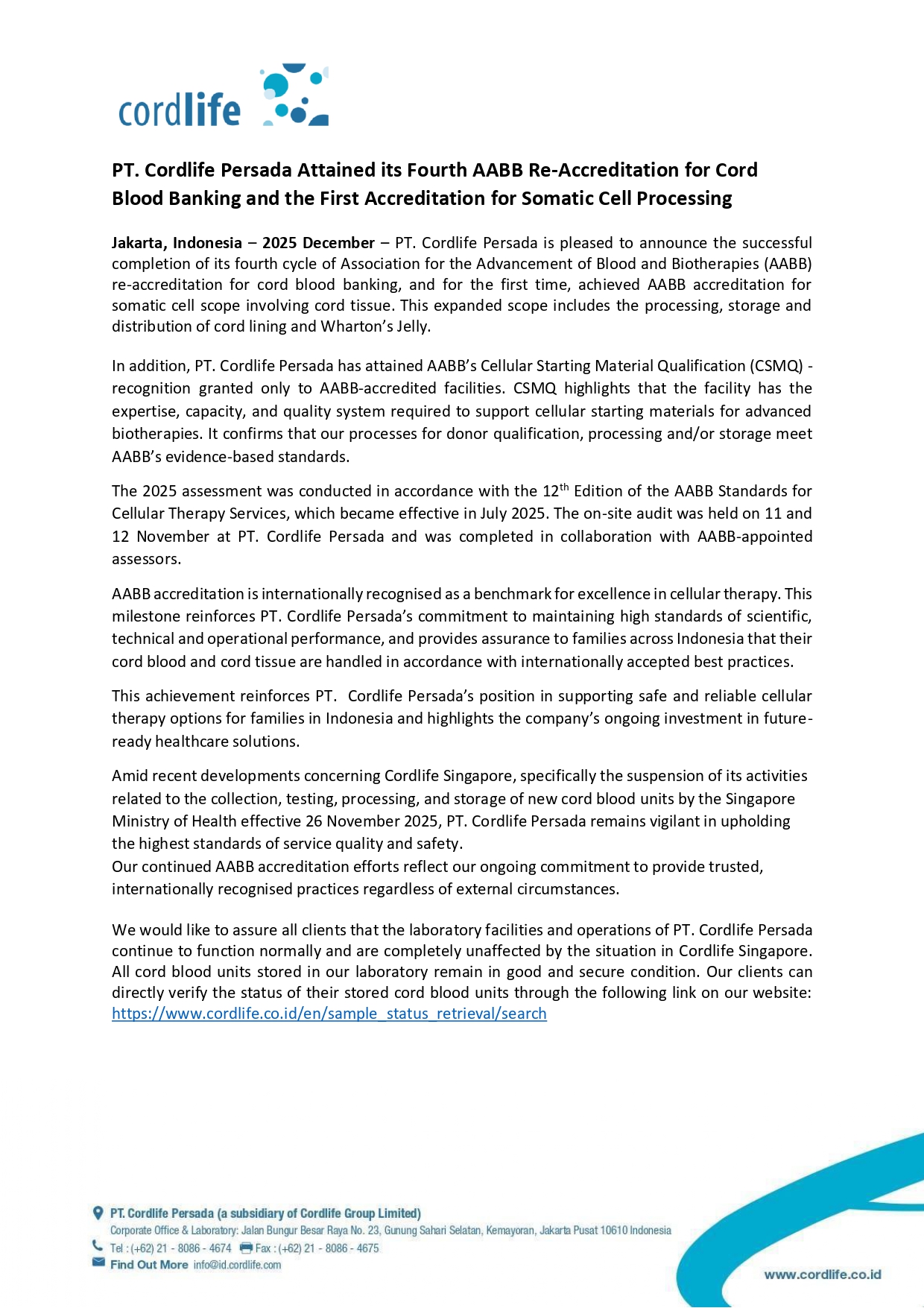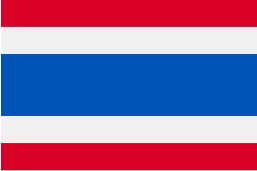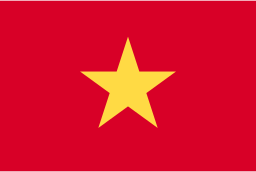
Give your baby a lifetime of protection
Get peace of mind against the unforeseeable.


What is cord blood
Cord blood is the blood that remains in a baby’s umbilical cord and placenta after birth.

Lifesaving potential
Cord blood contains stem cells that can regenerate the blood and immune system.

Over 80 diseases
These cells have the potential to treat more than 80 disorders, such as leukaemia and lymphoma.

Family protection
Cord blood is a 100% match for your baby and has a higher chance of a match with her siblings.

Future potential
Cord blood is used in clinical trials for conditions such as autism, cerebral palsy and brain injuries.
Treat over 80 diseases
with cord blood stem cells
Since 1988, doctors have used cord blood to treat over 60,000 patients suffering from diseases such as leukaemia, lymphoma and blood disorders. Cord blood stem cell transplants are currently being used as standard mainstream treatment for the diseases listed here.
Diseases that can potentially be treated with cord blood stem cells
- Acute lymphoblastic leukaemia
- Neuroblastoma
- Non-Hodgkin’s lymphoma
- Retinoblastoma
- Severe combined immune deficiency
- Multiple myeloma
- Aplastic anaemia
- Fanconi’s anaemia
- Congenital dyserythropoietic anaemia
- Sickle cell anaemia
- Thalassaemia major
- Osteopetrosis
Ongoing clinical trials using stem cells that can be found in cord blood
- Autism
- Cerebral palsy
- Global developmental
- Parkinson’s disease
- Spinal cord injury
- Stroke
- Myocardial infarction
- Alopecia areata
- Diabetes (Type 1 & 2)
- Lupus
- Multiple sclerosis
- HIV
- Breast cancer
- Ovarian cancer
- Cartilage injury
- Osteoarthritis
Over 3,000 clinical trials registered
Ongoing worldwide research is pushing science to discover the greater potential of stem cells that can also be found in cord blood. By storing your baby's umbilical cord stem cells, you are availing your family to more medical options in the future.
Reference: Clinicaltrials.gov. U.S. National Library of Medicine. https://www.clinicaltrials.gov/ct2/results?term=haematopoietic+stem+cells&Search=Apply&recrs=b&recrs=a&recrs=f&recrs=d&recrs=e&age_v=&gndr=&type=&rslt=. Accessed March 7, 2023.
More reasons to consider cord blood banking

Likelihood of
needing stem cells
We become more vulnerable to diseases as we age. Research shows that 1 in 3 people will benefit from regenerative medicine therapy.1

Higher chance
of finding a match
You’re more likely to find a cord blood match within the family than bone marrow, which means your family member can get treatment sooner.2

Lower risk
of complications
Studies have shown that transplant complications are lower when patients get stem cells from a family member.

Once-in-a-lifetime
opportunity
You only have one chance to collect your baby’s precious cord blood: at birth. Once missed, this opportunity is lost forever.
- Harris DT. Cord blood stem cells: a review of potential neurological applications. Stem Cell Reviews. 2008; 4:269-274.
- Gluckman E, Rocha V, Boyer-Chanmard A, et al. Outcome of Cord-Blood Transplantation from Related and Unrelated Donors. N Engl J Med. 1997; 337-373-381.

Access to
potential medical resource
Get a peace of mind knowing that you’ve given your family immediate access to a potential medical resource in case it’s ever needed.
How Cordlife clients have benefited from their cryopreserved cord blood

Cordlife has successfully helped our clients release their cryopreserved cord blood units for transplantation or therapy at 18 healthcare institutions in 9 countries









Cordlife Value-Added Services
Cordlife ALLIANCE
In the event of a medical need and the family’s cord blood unit is not suitable to be used, the family can tap into the community bank to search for alternative matching cord blood units from various Asian countries where Cordlife operates.
Cordlife Shield
A pregnancy insurance that provides coverage for the pregnant mother and the baby from 7 types of possible pregnancy complications, 16 types of congenital illnesses, and maternal or child death.
Transplant Care
A transplant subsidy wherein Cordlife will provide one-time payment of up to SGD50,000 to partially cover medical costs of transplantation for the child whose cord blood unit is stored (autologous use), the child’s biological siblings, biological parents or biological grandparents applicable for use in standard treatment at any accredited hospital in the Philippines.
Cord Blood Network
Assisted search for matching cord blood for legal parents and grandparents of Cordlife child, tapping Cordlife’s partner registries in Mainland China.
Cordlife Care 360o
We understand your needs and concerns as parents, which is why we supplement our cord blood banking plans with Cordlife Care 360o to provide the most comprehensive care for you and your family.

Getting Started
Sources
- Diseases treated page. Parent’s Guide to Cord Blood Foundation. http://parentsguidecordblood.org/diseases. Accessed February 1, 2023
- Nietfeld JJ, Pasquini MC, Logan BR, et al. (2008). Biology of Blood and Marrow Transplantation. 14:316-322.
- Mayani H, Wagner JE, Broxmeyer HR (2019). Cord blood research, banking, and transplantation: achievement, challenges, and perspectives.
Accessed February 1, 2023 - www.cordblood.com/newborn-stem-cells-101
- For details, visit www.cordlife.ph/release-track-record
- As of May 2022, based on consolidated fgures of Cordlife Group Limited and its associates.



